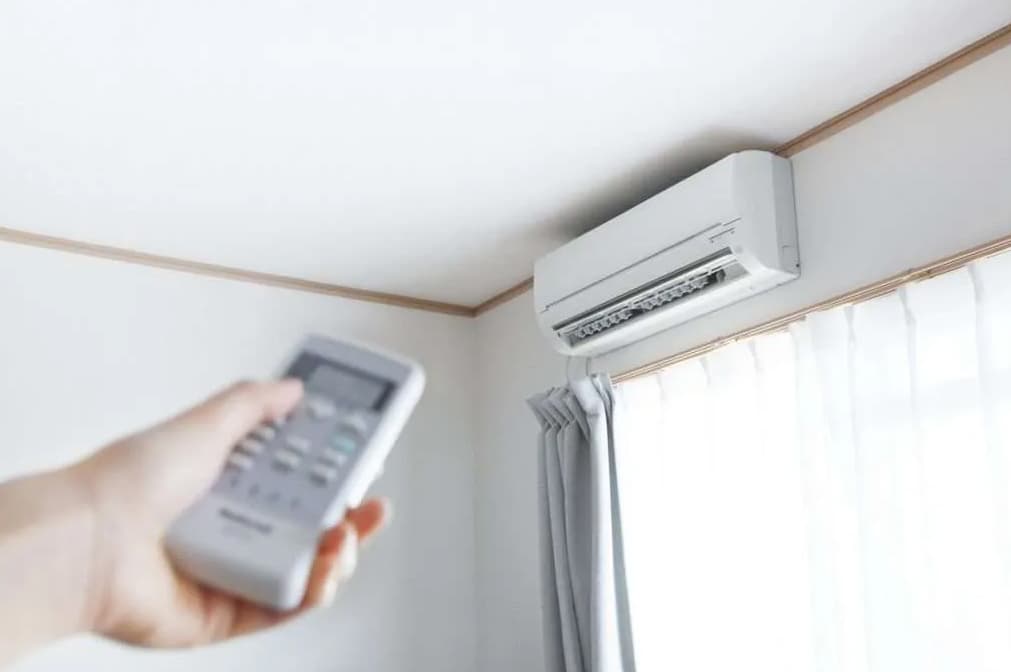Introduction Are you considering installing a mini-split system in your home? Mini-splits are a great way to efficiently heat and cool specific rooms or areas.
But before you take the plunge, it’s important to understand the ongoing costs of running these systems.
How Much Does It Cost To Run A Mini Split Per Month?

In this article, we’ll dive into all the factors that impact your monthly mini-split expenses.
We’ll explore what mini-splits are, how usage affects costs, and provide a simple formula to estimate your bill.
We’ll also look at the key things that make your mini-split more or less expensive to operate and share some helpful tips to keep those costs as low as possible.
By the end, you’ll have a clear picture of what to expect in terms of monthly operating costs and how to get the most bang for your buck with a mini-split system. Let’s get started!
What is a Mini-Split System?
First off, let’s make sure we’re on the same page about what a mini-split is. A mini-split, also known as a “ductless mini-split” or “ductless heat pump”, is a type of heating and cooling system that doesn’t require ducts like traditional HVAC systems.
Instead, it has two main parts:
- An outdoor unit (the condenser/compressor)
- One or more indoor units (air handlers)
A small conduit connects the two units, circulating refrigerant, power, and drainage. The indoor units are mounted on walls or ceilings and distribute warm or cold air directly into different zones of your home.
Each indoor unit can be controlled separately, allowing you to set the perfect temperature for each room or area.
Mini-splits are known for being very energy-efficient. They avoid the energy losses associated with ductwork and let you heat or cool only the spaces you’re using.
However, the upfront cost is usually higher than traditional HVAC systems.
What Affects Mini-Split Usage & Costs?
How much it costs to run your mini-split each month depends on three key factors:
- The size/capacity of the system (measured in BTUs)
- The efficiency rating of the system (SEER for cooling, HSPF for heating)
- Electricity prices in your area ($ per kilowatt-hour)
- How many hours per day you run the system
Larger systems cost more to run because they use more power. More efficient systems cost less because they can produce the same amount of heating/cooling while using less electricity.
Higher local electricity prices mean higher operating costs. And of course, the more you use the system, the more electricity it will consume and the higher your bill will be.
It’s important to get the right size mini-split for your needs – not too big and not too small. Oversized systems will cycle on and off frequently, wasting energy.
Undersized ones will run constantly, struggling to keep up with demand.
A qualified HVAC technician can help you choose the perfect fit.
Estimating Your Monthly Mini-Split Costs
Want to crunch the numbers on your monthly mini-split running costs?
Here’s a simple formula:
Mini-Split Running Cost = (Average Wattage × Electricity Price × Usage Hours) ÷ 1000
To use this formula, you’ll need to know:
- The size of your mini-split in BTUs (e.g. 9,000, 12,000, 18,000, etc.)
- The SEER efficiency rating of your system (e.g. 16, 18, 20, etc.)
- The price you pay for electricity per kilowatt-hour (kWh).
- An estimate of how many hours per day you’ll use the system.
You can find the size and SEER rating on the unit itself or in the owner’s manual. Your electricity rate is on your utility bill.
Usage hours will vary based on your climate, thermostat settings, and personal preferences.
Here’s how to calculate the average wattage: Average Wattage = Size of Mini-Split (in BTUs) ÷ SEER Rating
Let’s try an example. Say you have a 12,000 BTU mini-split with a SEER rating of 18. You pay $0.12 per kWh for electricity and you estimate running the system for about 8 hours per day (240 hours per month).
First, find the average wattage: 12,000 BTU ÷ 18 = 667 watts
Then, plug the numbers into the main formula: (667 watts × $0.12 per kWh × 240 hours) ÷ 1000 = $19.20 per month
So in this scenario, you’d expect to pay around $19 per month to run the mini-split. Keep in mind, that this is just an estimate.
Your actual costs may be higher or lower based on your specific circumstances.
Factors That Impact Mini-Split Running Costs
While size, efficiency, electricity prices, and usage are the biggest drivers of monthly mini-split costs, there are many other factors at play. Here are some key things to consider:
- Climate & Weather In regions with very hot summers or frigid winters, your mini-split will have to work harder to maintain a comfortable indoor temperature. This means more energy use and higher bills. Mild climates with smaller temperature swings are easier on your system and your wallet.
- System Maintenance Regular professional tune-ups and DIY tasks like changing filters help your mini-split run at peak efficiency. A well-maintained system uses less energy, costs less to operate, and lasts longer. Neglecting maintenance leads to slow performance degradation and higher bills over time.
- Thermostat Settings Every degree counts when it comes to HVAC costs. During summer, set your thermostat as high as comfortably possible. In winter, go as low as you can stand. Avoid extreme setbacks when you’re away – it takes a lot of energy to reheat or re-cool your space. Using a programmable or smart thermostat helps automate energy savings.
- Insulation & Weatherization Good insulation and air sealing keep valuable warm or cool air inside your home, reducing the load on your mini-split. Poor insulation, drafty windows and doors, and air leaks force your system to work overtime. Investing in weatherization can significantly cut your operating costs.
- Humidity Levels Mini-splits often have to work harder in humid climates, especially during the cooling season. High humidity makes the air feel warmer than it is, so you may be tempted to lower the thermostat. Some mini-splits have dehumidification features that can help, but they use extra energy. Using standalone dehumidifiers can take some of the burden off your mini-split.
- Zoning & Usage Patterns One of the biggest benefits of mini-splits is zoned temperature control. You can set different temperatures in different rooms based on usage and preferences. Keeping rarely used rooms at more moderate temps and avoiding heating or cooling unoccupied spaces saves energy and money.
- Age & Condition As with any mechanical system, performance declines with age. A 15-year-old mini-split won’t be as efficient as it was on day one, even with perfect maintenance. At some point, usually around the 15-20 year mark, replacement becomes more cost-effective than continued repairs. Newer models also tend to have better efficiency specs than older ones.
Choosing an Efficient Mini-Split
If low operating costs are a priority, look for mini-split systems with top-notch efficiency ratings. The most common efficiency metrics for mini-splits are:
- SEER (Seasonal Energy Efficiency Ratio): Measures cooling efficiency. Higher is better. Current models range from 13 to over 30 SEER.
- HSPF (Heating Seasonal Performance Factor): Measures heating efficiency. Higher is better. Current models range from 7.7 to over 13 HSPF.
- Energy Star Certification: Indicates that a product meets strict energy efficiency guidelines set by the U.S. EPA. Energy Star certified mini-splits are among the most efficient on the market.
As a general rule, aim for a mini-split with a SEER rating over 16 and an HSPF over 8.2 for the best balance of comfort and cost-effectiveness. The higher you go above those baselines, the more you’ll save on monthly bills – but you’ll also pay more upfront. It’s all about striking the right balance for your budget and long-term goals.
Tips for Minimizing Mini-Split Costs
We’ve covered a lot of ground on the factors that impact mini-split running costs.
Now, let’s summarize some of the best ways to keep those costs as low as possible:
- Choose the right size system. Not too big, not too small. An HVAC pro can help you find the sweet spot.
- Prioritize energy efficiency. Look for Energy Star certified systems with high SEER/HSPF ratings. They cost more upfront but save in the long run.
- Install & maintain properly. Hire a qualified, experienced technician for installation. Schedule annual tune-ups and stay on top of DIY maintenance like filter changes.
- Set your thermostat wisely. Keep temps as high in summer and low in winter as comfort allows. Use a programmable or smart thermostat to automate savings.
- Weatherize your home. Add insulation, seal air leaks, and upgrade to efficient windows and doors. A tight, well-insulated envelope reduces the load on your mini-split.
- Take advantage of zoning. Only heat or cool occupied rooms to the temp you need. Keep rarely used spaces in more moderate settings.
- Manage humidity separately. Use standalone dehumidifiers in humid climates to avoid overtaxing your mini-split.
- Upgrade aging equipment. Replace systems older than 15-20 years with newer, more efficient models. Look for utility rebates and tax incentives to offset the cost.
Hidden Costs & Fees to Watch For
While the tips above will help minimize your day-to-day operating expenses, there are some hidden costs of owning a mini-split to be aware of:
- Professional installation: Unless you’re an HVAC expert, you’ll need to hire a pro to install your mini-split. Installation costs vary widely based on system size, home layout, and contractor rates in your area. Get multiple quotes and be sure to factor installation into your budget.
- Permits & inspections: Many localities require building permits and inspections for HVAC work. Your contractor should handle this, but be sure to ask about it upfront. Permit fees can add to the overall project cost.
- Electrical upgrades: Depending on the age and condition of your home’s electrical system, you may need to upgrade circuits or panels to accommodate a mini-split. This work must be done by a licensed electrician and can add significant cost.
- Extended warranties: Most mini-splits come with a basic manufacturer’s warranty, but you may be offered an extended warranty at an additional cost. Carefully weigh the terms and potential benefits before deciding if it’s worthwhile.
- Planned maintenance: Annual professional tune-ups are essential for keeping your mini-split running efficiently and preventing breakdowns. Expect to spend $75 to $200 per visit, depending on the scope of work. Some HVAC companies offer yearly maintenance plans at a discount.
- Unexpected repairs: No matter how well you maintain your system, parts can break down over time. Electrical components, condensate pumps, and refrigerant leaks are some of the most common culprits. Repair costs depend on the specific issue and whether your system is under warranty.
- Installation site upgrades: If the ideal location for your outdoor unit is on a deteriorating concrete pad or near overgrown bushes, you may need to make some improvements to the area before installation. This could involve pouring a new pad or clearing obstructing vegetation.
- Replacement costs: No mini-split lasts forever. When your system reaches the end of its useful life, you’ll need to budget for a complete replacement. Expect to spend at least a few thousand dollars, though exact costs depend on the size and complexity of the new system.
While some of these costs are unavoidable, planning for them can help avoid surprises down the road. Build a buffer into your budget, both upfront and ongoing, to account for the true cost of owning and operating a mini-split.
Conclusion
We’ve covered a lot of information on the monthly costs of running a mini-split system. While there’s no one-size-fits-all answer to the question of “how much”, this guide should give you a solid framework for estimating your expenses and identifying opportunities to save.
To recap, your mini-split operating costs depend primarily on:
- The size & efficiency rating of the system
- Local electricity prices
- Usage Patterns & Climate Considerations
- Maintenance & upkeep
Using the simple formula provided, you can plug in your specific numbers to get a ballpark estimate of monthly running costs.
From there, implementing energy-saving best practices like proper sizing, thermostat setbacks, zoning, and regular maintenance will help keep bills as low as possible.
When shopping for a new mini-split system, prioritize efficiency (high SEER/HSPF) and quality installation for the best long-term value.
Don’t forget to account for hidden costs like permits, electrical upgrades, and extended warranties in your budgeting.
All in all, while mini-splits have higher upfront costs than some other HVAC options, their impressive efficiency and zoning capabilities can lead to very reasonable operating costs, especially in temperate climates.
With a little research, smart usage, and proactive maintenance, you can enjoy affordable, year-round comfort with a ductless mini-split system.
Consider consulting a professional HVAC technician for expert advice tailored to your unique home and goals.



